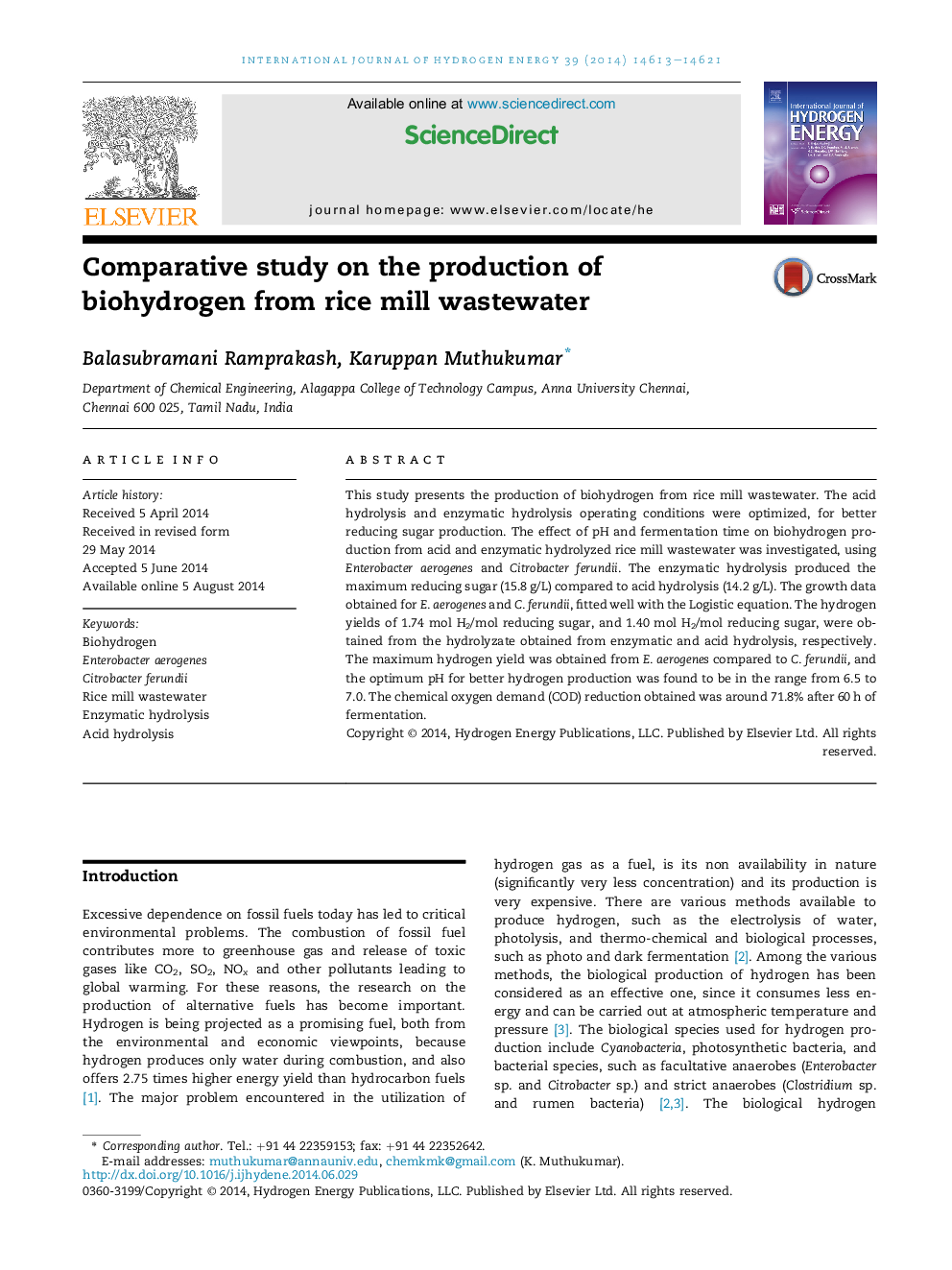| Article ID | Journal | Published Year | Pages | File Type |
|---|---|---|---|---|
| 7718024 | International Journal of Hydrogen Energy | 2014 | 9 Pages |
Abstract
This study presents the production of biohydrogen from rice mill wastewater. The acid hydrolysis and enzymatic hydrolysis operating conditions were optimized, for better reducing sugar production. The effect of pH and fermentation time on biohydrogen production from acid and enzymatic hydrolyzed rice mill wastewater was investigated, using Enterobacter aerogenes and Citrobacter ferundii. The enzymatic hydrolysis produced the maximum reducing sugar (15.8Â g/L) compared to acid hydrolysis (14.2Â g/L). The growth data obtained for E. aerogenes and C. ferundii, fitted well with the Logistic equation. The hydrogen yields of 1.74Â mol H2/mol reducing sugar, and 1.40Â mol H2/mol reducing sugar, were obtained from the hydrolyzate obtained from enzymatic and acid hydrolysis, respectively. The maximum hydrogen yield was obtained from E. aerogenes compared to C. ferundii, and the optimum pH for better hydrogen production was found to be in the range from 6.5 to 7.0. The chemical oxygen demand (COD) reduction obtained was around 71.8% after 60Â h of fermentation.
Related Topics
Physical Sciences and Engineering
Chemistry
Electrochemistry
Authors
Balasubramani Ramprakash, Karuppan Muthukumar,
